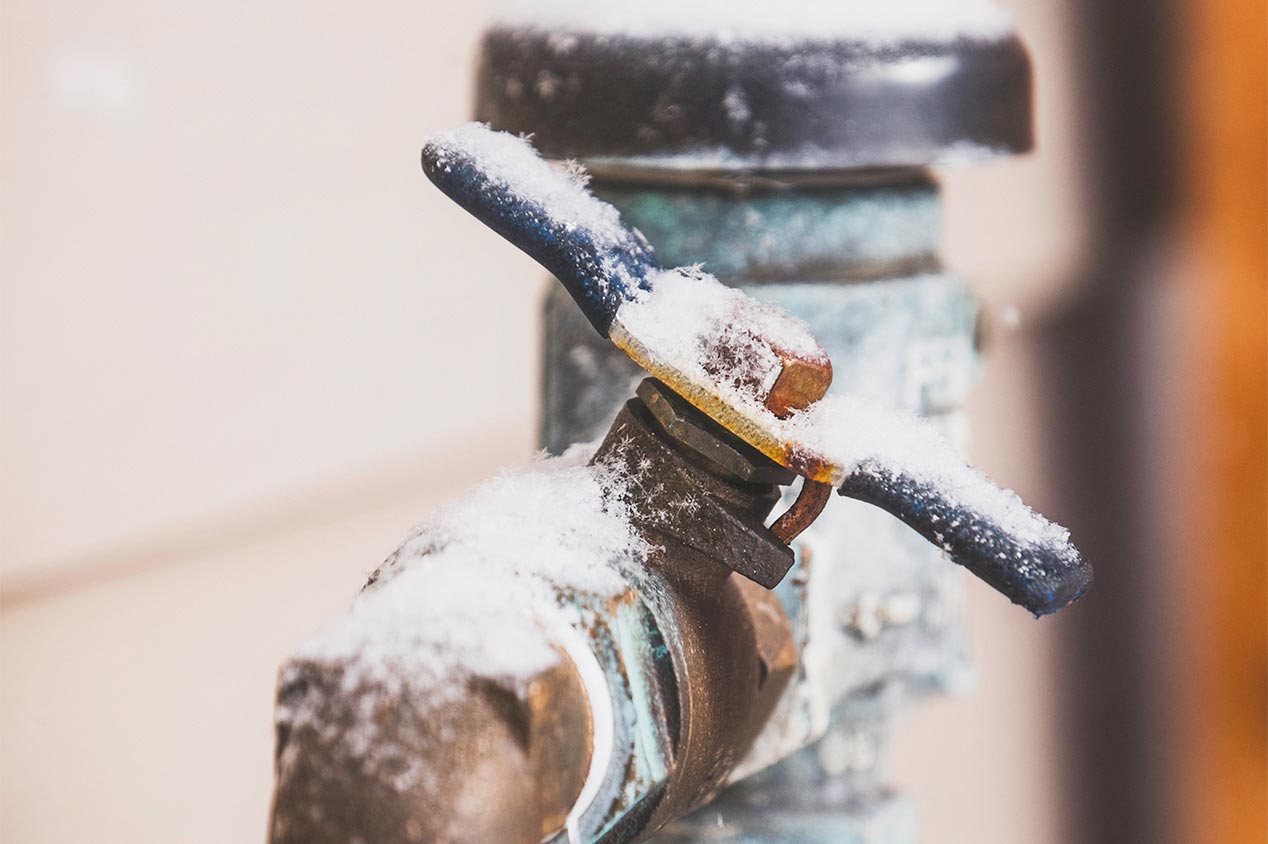
Photo: CatLane / iStock/ Getty Images Plus / Getty Images
Homeowners—especially those who live in cold areas—face the challenge of frozen water in the pipes during winter. When water freezes in a pipe, it expands, increases the pressure inside the pipe, and can cause the pipe to burst. A burst water pipe can cause flooding and lead to thousands of dollars in damage to your home. Luckily, there are steps you can take to prevent frozen water pipes in your home and avoid costly repairs.
In this article:
- Turn Off Supply Lines to Outside Faucets
- Insulate Vulnerable Pipes
- Install Electric Heating Tape
- Leave Your Faucets Dripping a Little
- Open Cabinet Doors
- Keep Garage Doors Closed
- Seal Cracks or Holes in Exterior Walls
- Keep Your Thermostat Set to the Same Temperature
- Leave the Heat on When Away
- Turn Off the Water Entering Your House
- How to Thaw Frozen Pipes
- FAQs
1. Turn Off Supply Lines to Outside Faucets
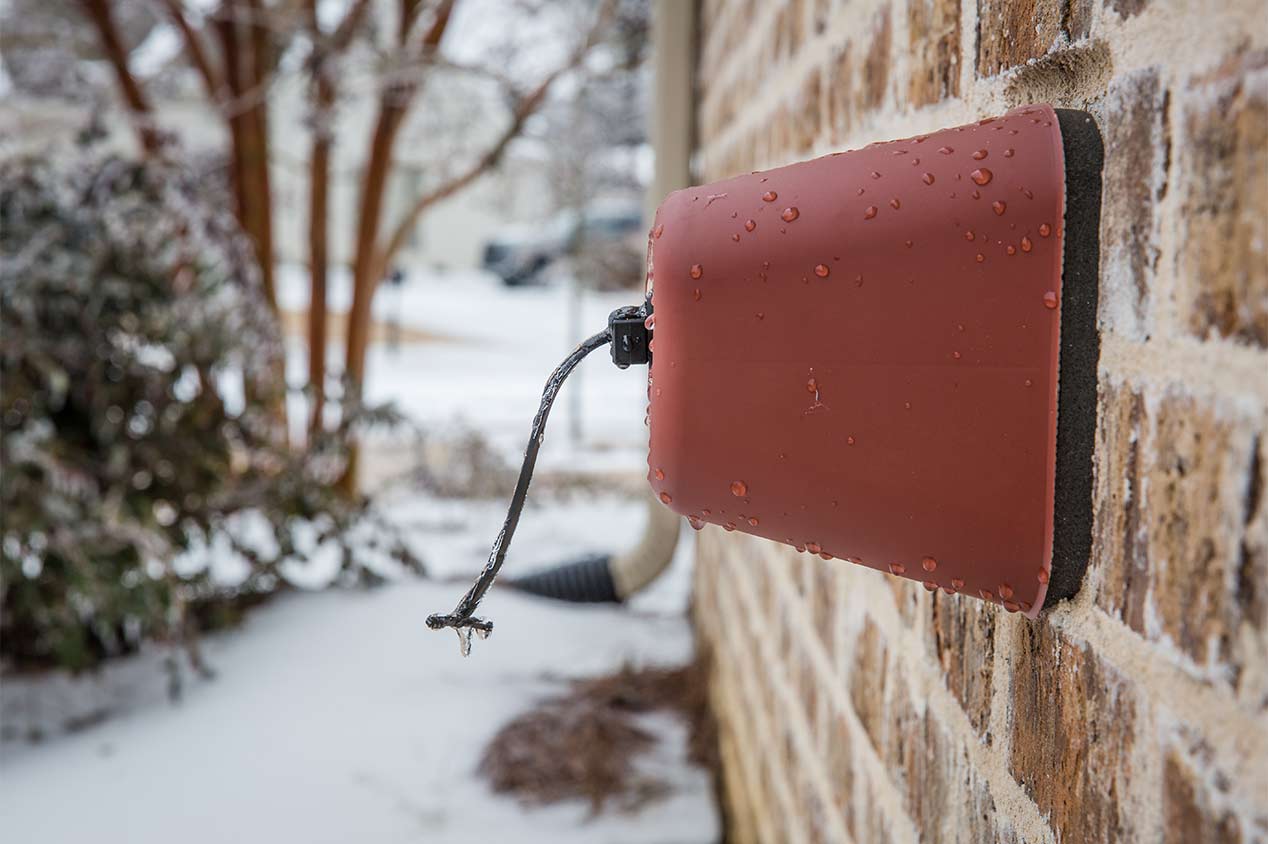
Photo: Charise Wilson Photography / iStock/ Getty Images Plus / Getty Images
Just as the weather turns cold, remove all hoses from outdoor faucets, drain them, and then store them inside. Shut off the inside valve supplying the outdoor faucets. If this isn’t possible, cover the faucets with insulating covers. After that, open the outside valve to drain water and keep the valve open so any water remaining in the pipe can expand without breaking the pipe.
Find a Plumber Near You2. Insulate Vulnerable Pipes
Insulate vulnerable pipes, such as those located in exterior walls or unheated areas of your house, like your basement, attic, and crawl spaces, with fiberglass, foam, or pipe sleeves. Pipe insulation costs $600 per 100 linear feet on average. You can also use towels or blankets to wrap exposed pipes. Insulating pipes will keep them warm even in freezing temperatures and lower the risk of the pipes freezing and bursting.
3. Install Electric Heating Tape
If you live in an area where temperatures drop below freezing frequently, consider buying electric heating tape. It’s easy to install and inexpensive to operate. The device wraps around a pipe with one end plugged into a standard electrical outlet. You can control the temperature with a thermostat.
4. Leave Your Faucets Dripping a Little
Moving water typically freezes at a lower temperature than still water. For example, this is why lakes freeze in the winter while rivers keep running. By leaving a faucet dripping or running a little, you keep the water moving and thus lower the chances of your pipes freezing.
5. Open Cabinet Doors
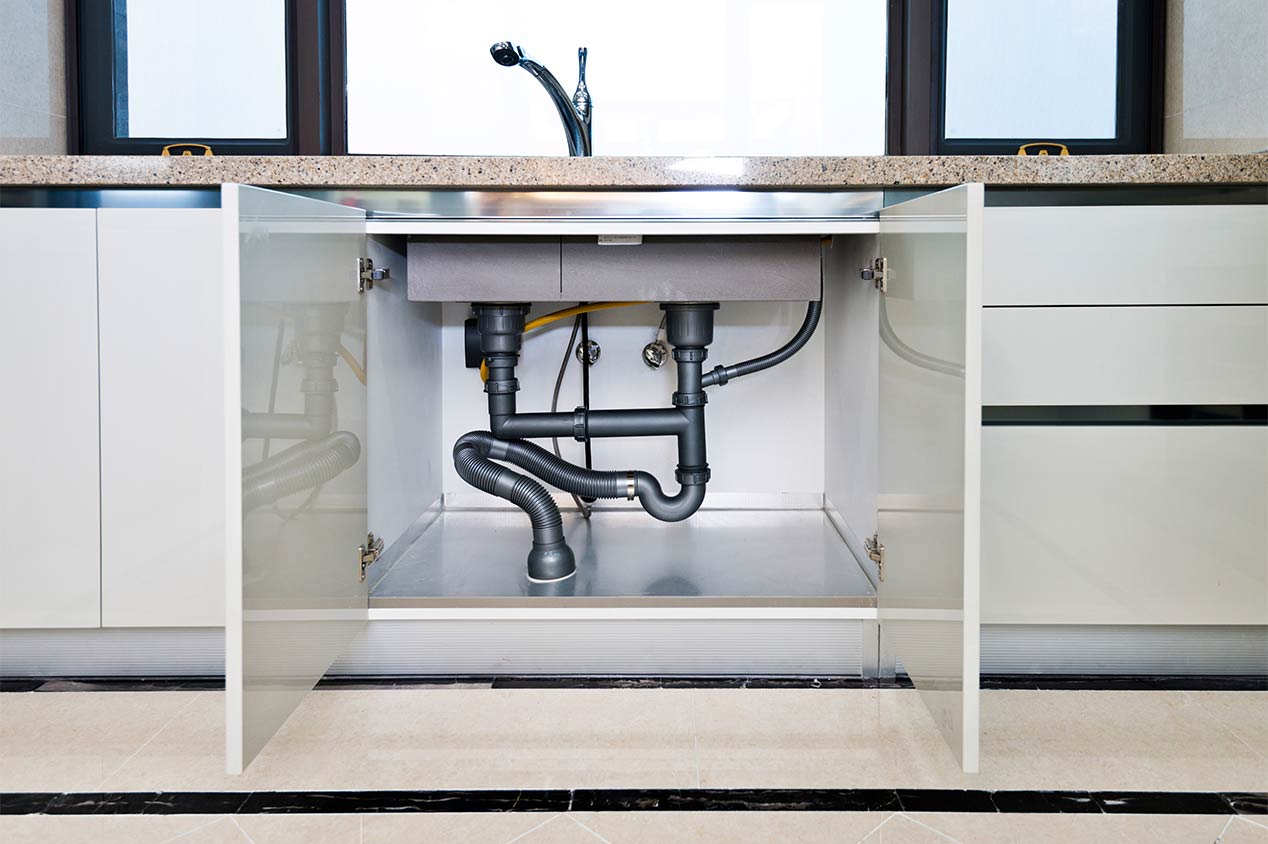
Photo: baona / iStock / Getty Images
Leave your cabinets open at night if the pipes that supply water to your bathroom or kitchen sink faucets are prone to freezing. The open doors will allow warm air to circulate in your cabinets, warming the cold pipes.
6. Keep Garage Doors Closed
If there are water supply lines inside your garage, keep the doors closed. This will help prevent any available heat from escaping.
7. Seal Cracks or Holes in Exterior Walls
Cracks or holes in your exterior walls can allow cold air to enter, making your pipes colder and increasing their chances of freezing. To avoid this, use caulk to seal all the cracks or holes in your exterior walls, especially those near pipes.
8. Keep Your Thermostat Set to the Same Temperature During the Day and Night
If you have heat available in your home, keep your thermostat set to no lower than 55 degrees Fahrenheit when winter sets in, both during the day and at night. Understandably, this could add a few dollars to your monthly heating bill. However, the cost of maintaining the same temperature day and night pales in comparison to the cost of fixing frozen and burst pipes.
Read about other affordable ways to warm your home in the winter.
Find a Plumber Near You9. Leave the Heat on When Away From Home
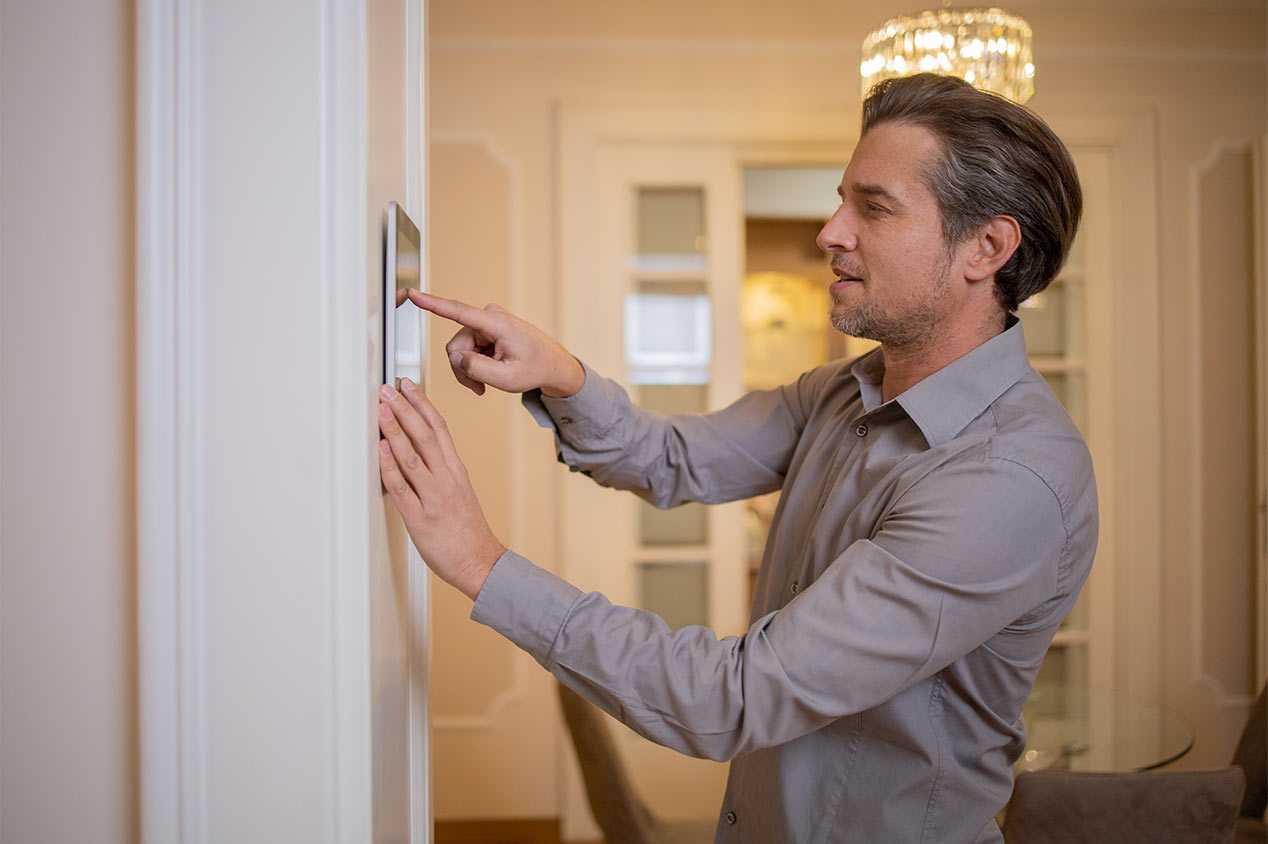
Photo: Rockaa / Getty Images
Don’t turn off your heating if you plan on spending the winter away from your home. Even the best-insulated home can drop to freezing levels if the heating is off. To prevent frozen pipes, leave your heat on and set it once again to a temperature of at least 55 degrees Fahrenheit.
10. Turn Off the Water Entering Your House
If you’re going to be away during the coldest weeks or months, turn off the water entering your house and drain your pipes before you leave. To do this, cut off the main line, which will typically be located somewhere in your yard. Once you’ve cut off the main line, turn on all faucets until all the water drains from the interior house pipes.
How to Thaw Frozen Pipes
If your faucet has no or barely any water coming out after you turn it on, that’s usually the first sign you have a frozen pipe(s). It’s important to thaw frozen pipes as soon as possible to prevent them from bursting. If you suspect that freezing weather has already broken or burst a pipe, turn off the water at the main shut-off valve first and call for a pipe repair pro. Repairing a burst pipe costs between $200 and $1,000 but can go as high as $3,000.
If there are no breakages as far as you can tell, here are some steps you can follow to thaw your pipes safely:
- Locate the frozen section of the pipe. This will often be where the pipe is exposed to cold air, such as in an uninsulated crawl space, basement, attic, or along an exterior wall.
- Turn on the faucet. As the ice in the pipe thaws, the water will need somewhere to go. Turning on the faucet will allow the water to flow through the pipe and further help in thawing the ice in the pipe.
- Apply heat to the frozen area. You can use a hair dryer, heat lamp, or electric heating pad to apply heat to the frozen section of the pipe. Don’t use an open flame, such as a blowtorch, as this could be a fire hazard.
- Check the faucets to see if the water flow has returned to normal. If it hasn’t, continue applying heat until the blockage has been fully cleared.
If you’re unable to locate the frozen pipe or are unable to thaw it, call in a licensed plumber for help. And for more detailed instructions and tips on how to unfreeze your water pipes, check out our full guide to unfreezing your water pipes.
FAQs
When do pipes freeze?
Pipes are at risk of freezing when the temperature outside drops below freezing, or 32 degrees Fahrenheit, but will most commonly freeze at temperatures of 20 degrees Fahrenheit and below. This is especially true if the pipes don’t have proper insulation or they’re exposed to cold winter winds. Though it can happen at any time of the year, frozen pipes are most common during the winter months when temperatures are consistently below freezing.
How long should heating be on to stop pipes from freezing?
To prevent water pipes from freezing, you should keep your home’s heating running at a minimum temperature at all times. The exact temperature you should keep can vary depending on a couple of factors, including where you live and how well you’ve insulated your home. But as a general rule, keep your home at least 55 degrees Fahrenheit, especially if the temperature outside is very low.
How many hours below-freezing will pipes last before freezing?
Pipes are likely to freeze when exposed to below-freezing conditions (20 degrees Fahrenheit or lower) for six or more consecutive hours. The exact time can vary depending on the type and thickness of your pipes, the type of insulation surrounding the pipes (if any), and the location of the pipe. In general, pipes with proper insulation and protection from cold winter winds are likely to withstand freezing temperatures for longer before freezing than pipes exposed to the elements.
Find a Plumber Near You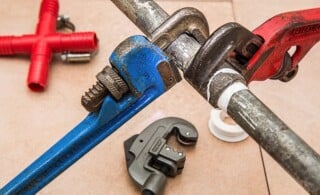 Common Thanksgiving Plumbing Issues
Common Thanksgiving Plumbing Issues  Holiday Gifts in Danger?
Holiday Gifts in Danger? 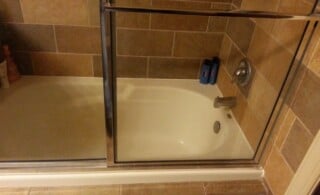 Tub and Stall Shower Installation
Tub and Stall Shower Installation 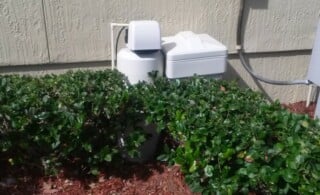 Water Softening Systems Filter Out the Hassles
Water Softening Systems Filter Out the Hassles 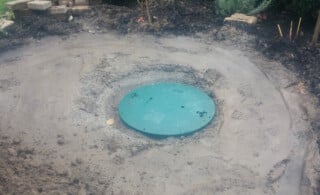 4 Types of Septic Tanks
4 Types of Septic Tanks 

Are You Familiar With This Topic? Share Your Experience.